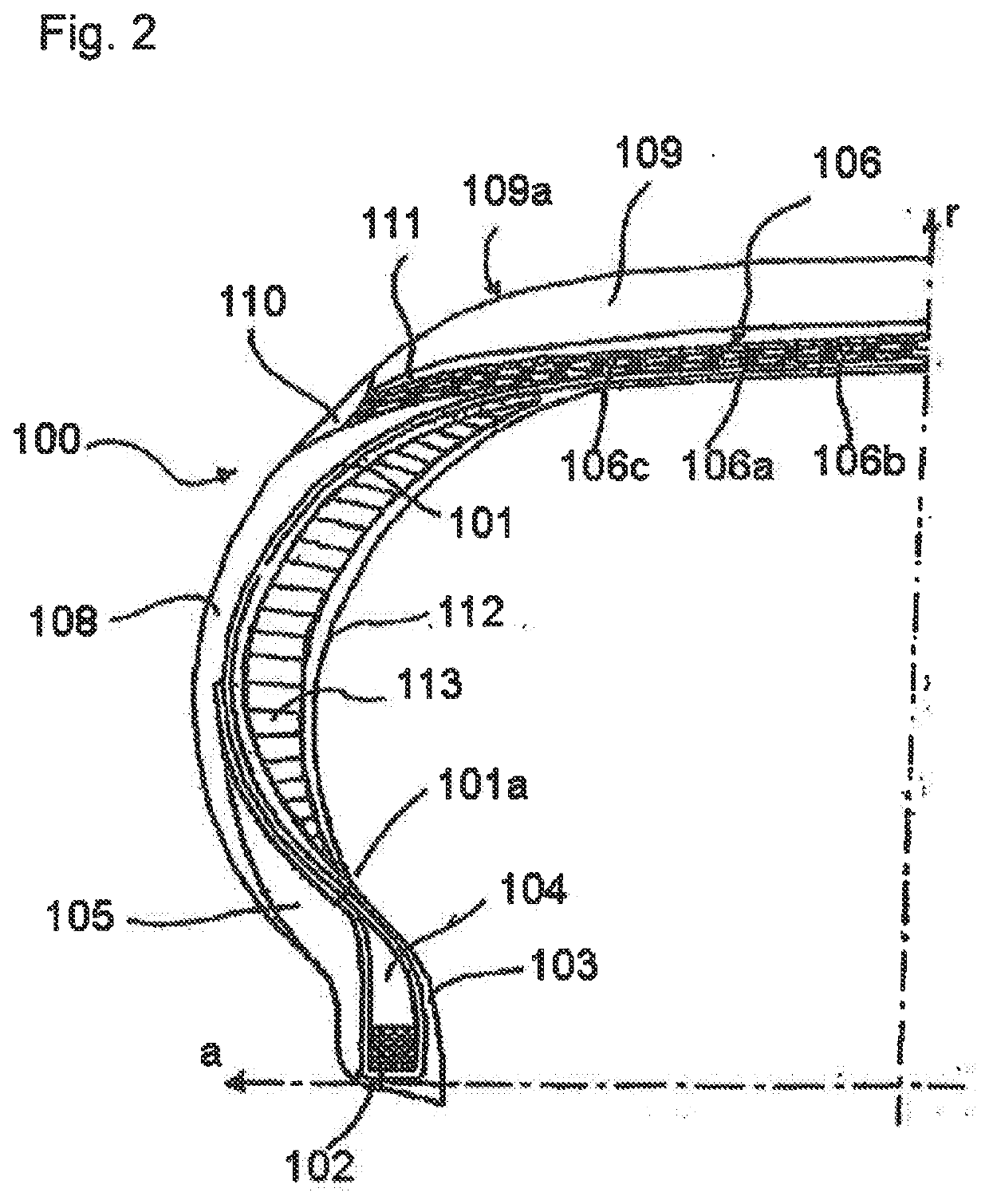Tyre for vehicle wheels
- Summary
- Abstract
- Description
- Claims
- Application Information
AI Technical Summary
Benefits of technology
Problems solved by technology
Method used
Image
Examples
example 1
[0142]Preparation of CAT-1SG-50-N2 and CAT-1SG-50-A
[0143]Iron nitrate nonahydrate (126.66 g) and aluminium nitrate nonahydrate (128.77 g) were dissolved in 140 mL of water. A solution of ammonium hydroxide (circa 17 M) was dripped under stirring, up to a pH about 7, at which gelation occurred. The addition of ammonia occurred with constant speed and lasted 30 minutes. The gel was dried at 60° C. for 12 hours, then mildly ground (average surface equivalent spherical diameter (ds) 37.88 μm), then it was divided into 2 aliquots of equal weight, calcining one in a nitrogen current and the other in an air current, at 500° C. for 90 minutes. Thus, 17.86 g of CAT-1SG-50-N2 and 17.40 g of CAT-1SG-50-A were respectively obtained, with an overall yield of 83% with respect to the theoretical.
[0144]Both the catalysts had a nominal catalyst content (normalizing the formulation as Fe+Al2O3) equal to 50% by weight with a fraction by weight of iron after calcination equal to 0.412.
[0145]Proceeding ...
example 2
[0149]Preparation of CAT-2SG-35-N2
[0150]Ammonium iron(III) oxalate trihydrate (67.66 g) and aluminium nitrate nonahydrate (119.00 g) were dissolved in 150 mL of water. A solution of ammonium hydroxide (circa 17 M) was dripped under stirring, up to a pH about 7, at which gelation occurred. The addition of ammonia occurred with constant speed and lasted 20 minutes. Such gel was placed on a Buchner filter and carefully washed with 3 aliquots of 50 mL water. It was then dried at 80° C. for 10 hours and then mildly ground (10-100 μm). The solid thus obtained was calcined under nitrogen atmosphere at 505° C. for 2 hours, leading to the obtainment of 22.80 g of catalyst, with a yield of 91% with respect to the theoretical.
[0151]The following table 2 reports some analytical data of the obtained catalyst. The measurements were carried out with the same techniques and instruments reported in example 1.
TABLE 2Average surfaceequivalentspherical diameterApparent densitySurface area[μm][g / cm3][m2...
example 3
[0153]Synthesis of the Carbon Nanotubes
[0154]The synthesis process consists of the CCVD method (catalytic chemical vapour deposition), which is conducted in particular in batch reactors with quartz fluid bed, provided with a porous septum which functions as distributor.
[0155]Nanotubes CNT1-SG1
[0156]2 grams of catalyst CAT-1SG-50-N2, prepared as in example 1, were fed in the reactor and the temperature was brought to 650° C. by means of a heating ramp of 15° C. / min in nitrogen current. Then, the catalyst is reduced in a hydrogen / nitrogen current with the ratio in partial pressures 0.3:0.7 for about 60 minutes. Subsequently, an ethylene / nitrogen mixture was fed, with the ratio under partial pressures 0.2:0.8 for 60 minutes, during which the deposit of carbon occurs. At the end of the experiment, 51 g of product were obtained.
[0157]Nanotubes CNT2-SG1
[0158]The procedure was repeated by using 2 grams of catalyst CAT-1SG-50-A, prepared as in example 1.
[0159]Nanotubes CNT3-SG1
[0160]The pro...
PUM
| Property | Measurement | Unit |
|---|---|---|
| Temperature | aaaaa | aaaaa |
| Temperature | aaaaa | aaaaa |
| Temperature | aaaaa | aaaaa |
Abstract
Description
Claims
Application Information
 Login to View More
Login to View More - R&D
- Intellectual Property
- Life Sciences
- Materials
- Tech Scout
- Unparalleled Data Quality
- Higher Quality Content
- 60% Fewer Hallucinations
Browse by: Latest US Patents, China's latest patents, Technical Efficacy Thesaurus, Application Domain, Technology Topic, Popular Technical Reports.
© 2025 PatSnap. All rights reserved.Legal|Privacy policy|Modern Slavery Act Transparency Statement|Sitemap|About US| Contact US: help@patsnap.com



